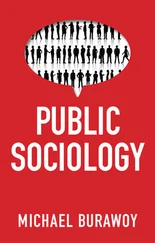
Renewable forms of energy, such as this offshore wind farm in the North Sea, are often cited as clear evidence that an ecological form of modernization is a real possibility.
The possibilities offered by EMT can be illustrated by reference to the waste disposal industry, which gets rid of the waste products that industries and consumers generate every day. Until recently, most of this waste was simply processed and buried in landfill sites. Today, the whole industry is being transformed. Technological developments make it much cheaper to produce newsprint from recycled paper than from wood pulp. Hence there are good economic reasons, as well as environmental ones, to use and reuse paper instead of endlessly cutting down trees. Not just individual companies but whole industries are actively pursuing the goal of ‘zero waste’ – the complete recycling of all waste products for future industrial use. Toyota and Honda have already reached a level of 85 per cent recyclability for the car parts they use. In this context, waste is no longer just the harmful dumping of materials but a resource for industry and, to some extent, a means of driving further innovation.
Significantly, some of the major contributions to recycling, and therefore to sustainable development, have come from areas with a heavy concentration of information technology industries, such as California’s Silicon Valley. Some ecological modernizers suggest that information technology, unlike many older forms of industrial production, is environmentally clean and, the more it plays a part in industrial production, the greater the likelihood that harmful environmental effects will be reduced. However, such optimism may be misguided. IT systems, the internet and cloud computing are energy intensive, demanding huge data-storage facilities. They have been seen as a new form of ‘heavy industry’ rather than as part of some ‘weightless economy’ and, as such, do not provide a simple solution to problems of economic development (Strand 2008).

The issue of energy-intensive information technology is discussed in chapter 13, ‘Cities and Urban Life’. Cloud computing and related matters can be found in chapter 19, ‘The Media’.
Unlike other perspectives, EMT is concerned less with global inequality and more with how businesses, individuals and non-state actors can all play a part in transforming society. This makes it different from sustainable development, which begins from the premise that reducing global inequality is a prerequisite for environmental protection. Ecological modernizers also argue that, if the capitalist economic system can be made to work for environmental protection, capitalism will continue; but, if not, something different will necessarily emerge, because the ecological modernization of global society is already well under way.
Critics have seen EMT as overly reliant on technological fixes and as relatively ignorant of cultural, social and political conflicts. Indeed, with its focus on developments in Europe, technological solutions and free markets, ecological modernization, argues Foster (2012), lies closer to a much older form of capitalist modernization theory than to a genuinely environmental sociology. In this sense, it harks back to the notion of human exemptionalism that environmental sociologists saw as the main ideological obstacle to bringing the environment into sociological theory. Ewing (2017) maintains that the focus on continuing economic growth and profitability puts EMT into the framework of promoting a self-defeating ‘green capitalism’ that is incapable of dealing with today’s global environmental issues with the necessary urgency and, therefore, should be rejected.
Ecological modernization certainly is imbued with technological optimism and does not have a fully worked-out theory of how to get from where we are into a sustainable society. Yet some EM theorists claim to be ‘agnostic’ about the future of capitalism. That is, if capitalism assists in the transition to long-term sustainability, then it could survive; however, if it becomes an obstacle, then it will die, and rightly so. Perhaps the real value of the EMT approach lies in the myriad real-world examples that it produces, alongside the practical technologies and suggestions for change it offers. Collectively, these could make a significant contribution in tackling environmental problems, provided that these can be made financially viable in the Global South as well as in the North.
Look again at the five social and institutional structures that constitute an ecologically modernist approach to environmental problems. List them in order of current progress – which structure has been transformed the most and which the least? What obstacles are harder to overcome in transforming social structures in environmentally sensitive directions?
Even the strongest advocates of ecological modernization accept that rescuing the global environment will require changes in the levels of social inequality that currently exist. Poverty is a prime contributor to practices that lead to environmental damage, and people living in conditions of economic hardship have no choice but to make maximum use of the local resources available to them. What will be needed are ‘just sustainabilities’ (Agyeman et al. 2003; Smith and Pangsapa 2008). Achieving ecological sustainability demands that concerted international efforts are made to tackle global inequalities as a necessary condition for environmental protection.
Environmental justice and ecological citizenship
Environmental justice is a term that originated in the USA with the formation of grassroots networks of activists in working-class communities (Szasz 1994; Bell 2004: ch. 1; Visgilio and Whitelaw 2003). Many of these were African-American neighbourhoods, and the selection of these areas for dumping hazardous waste and siting incinerators was seen by activists as a type of ‘environmental racism’ (Bullard 1993). Environmental justice campaigns can be seen as an extension of civil rights discourse into the arena of environmental issues, focusing on the way that many environmental problems ‘bear down disproportionately on the poor’ (Agyeman et al. 2003: 1).
An important foundational campaign was that of Lois Gibbs in Niagara Falls, New York, in 1978, who sought to relocate the Love Canal community, which she discovered had been built on a 20,000-ton toxic chemical dump. The community campaign was ultimately successful when 900 working-class families were relocated away from the leaking dump in 1980 (Gibbs 2002). Linking environmental quality to social class inequalities shows that environmentalism is not just a middle-class concern but can be related to working-class interests and takes account of social inequalities and real-world ‘risk positions’. In the USA, toxic waste sites have tended to be situated in black and Hispanic communities, where citizens’ action groups are relatively less powerful, but Gibbs’s working-class campaign showed that they are not powerless.
Environmental justice groups can be very significant. Their emergence has the potential to broaden the support base of environmental politics to currently under-represented groups within the wider environmental movement. For instance, Friends of the Earth International (among others), recognizing the need to tackle social problems if pressures on the natural environment are to be relieved (Rootes 2005), has expanded its agenda. Environmental justice takes us into the urban and inner-city areas, where most of the waste products of modern life wind up, and this opens environmental politics to people who may not have thought about their problems as being at all ‘environmental’.
Читать дальше














